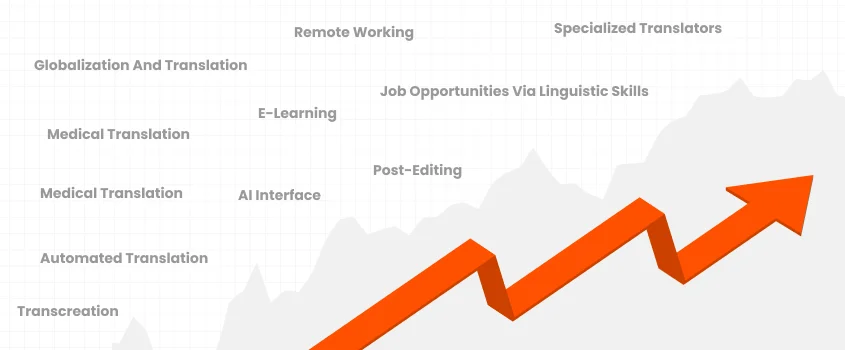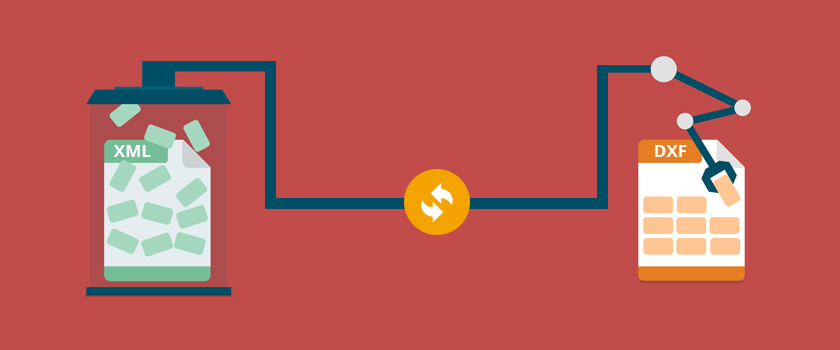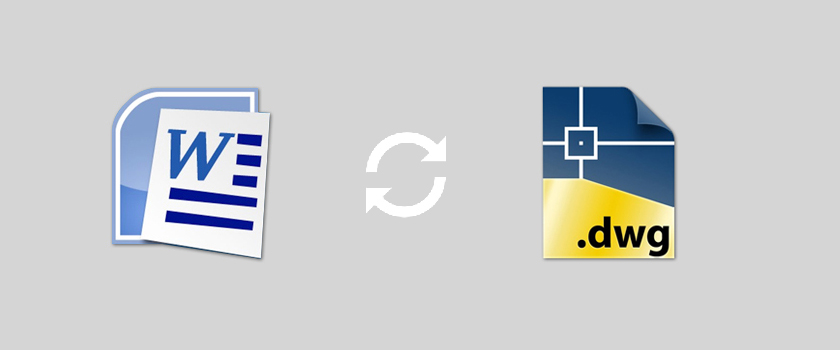Best Practices For Healthcare Translation
By: Salman Saeed Posted on Tue, 03-10-2023

In today’s globalized world, healthcare translation has become a crucial aspect of the healthcare industry. Healthcare translation refers to translating medical documents, prescriptions, and other healthcare-related materials from one language to another. Healthcare translation aims to provide accurate and clear communication between healthcare providers and patients who speak different languages.
This article will discuss the background of healthcare translation, common problems, best practices, importance, and how to choose the best healthcare translation service.
Background of Healthcare Translation
The healthcare industry is one of the most complex industries, where clear communication is critical to provide quality care to patients. Language barriers can lead to miscommunication, resulting in poor health outcomes, increased healthcare costs, and even legal issues. Healthcare translation services emerged as a solution to address these challenges. In the past, healthcare providers relied on bilingual staff or friends and family members to act as interpreters. However, these methods were only sometimes reliable and could lead to misunderstandings. As a result, healthcare providers started using professional healthcare translation services offered by all good and professional translation companies to ensure accurate and clear communication.
Common Healthcare Translation Problems

Despite the advantages of healthcare translation, there are still some challenges that can affect the quality of the service. Some of the common healthcare translation problems include:
1. Cultural differences:
Cultural differences can lead to misunderstandings in healthcare translation. For example, it is considered rude in some cultures to ask personal questions. However, asking personal questions is necessary to provide quality care in the healthcare industry.
2. Technical terminology:
Healthcare terminology can be complex and difficult to translate. Some medical terms may have different words in another language, leading to confusion.
3. Idiomatic expressions:
Idiomatic expressions can also be a problem in healthcare translation. Idiomatic expressions are phrases that cannot be translated literally. For example, the English expression “break a leg” means “good luck,” but it does not make sense when translated into another language.
4. Legal requirements:
Healthcare translation must comply with legal requirements, which can vary from country to country. Please comply with legal requirements to avoid legal issues.
Best Practices For Healthcare Translation

To ensure accurate and clear communication in healthcare translation, it is essential to follow some best practices. The following are ten best practices for healthcare translation:
1. Use professional translators:
Professional translators have the skills and knowledge to provide accurate and clear healthcare translations, ensuring that patients receive the correct information in their preferred language. This can improve patient satisfaction and trust in healthcare providers.
2. Use certified translators:
Certified translators have been tested and verified to have the necessary skills and knowledge to provide accurate and clear healthcare translations. Using certified translators can ensure the quality and accuracy of translated healthcare materials.
3. Use translators with healthcare industry experience:
Translators with healthcare industry experience have a better understanding of healthcare terminology and requirements. They are more likely to be familiar with the jargon and technical language used in healthcare settings, which can help to produce more accurate translations.
4. Use translators with knowledge of medical regulations:
Translators with knowledge of medical regulations can ensure compliance with legal requirements. They can ensure that translations meet regulatory standards and avoid misunderstandings or legal issues.
5. Provide context:
Providing context can help translators accurately understand and translate the document. This can reduce the risk of misinterpretations and inaccuracies in the translation.
6. Use technology:
Technology can help improve the efficiency and accuracy of healthcare translation. Translation memory software, for example, can speed up the translation process and improve translation consistency.
7. Use plain language:
Using plain language can make healthcare translation easier for patients. Patients with limited proficiency in a language may struggle with complex medical terminology, making it important to provide translations in plain language that they can understand.
8. Review translations:
Reviewing translations can help identify and correct errors or misunderstandings. This can ensure that translations are accurate, clear, and appropriate for the intended audience.
9. Use back-translation:
Back-translation involves translating the translated text into the original language to ensure accuracy. This can help identify errors or misunderstandings that may have been missed during the initial translation process.
10. Training:
Training for healthcare providers can help them communicate effectively with patients who speak different languages. This can improve patient satisfaction and trust in healthcare providers and reduce the risk of miscommunications or misunderstandings. It can also help to ensure that patients receive the appropriate care and treatment.
Importance of Healthcare Translation

Healthcare translation is important for several reasons:
1. Access to healthcare information:
Healthcare translation allows patients who speak different languages to access critical healthcare information, including medication instructions, treatment plans, and medical procedures. This is important for patient safety and can improve health outcomes.
2. Improved patient satisfaction:
When patients receive healthcare information in their preferred language, it can improve their understanding of their health conditions and treatment options. This can improve patient satisfaction with healthcare services and help build trust between patients and healthcare providers.
3. Compliance with legal requirements:
In many countries, healthcare providers must provide healthcare information in languages that patients can understand. Failing to provide accurate and clear healthcare translation can lead to legal and regulatory issues for healthcare providers.
4. Increased access to healthcare services:
Healthcare translation can also improve access to healthcare services for patients who may otherwise be excluded from healthcare services due to language barriers. This can help to address health disparities and promote health equity.
5. Improved quality of care:
Providing accurate and clear healthcare translation can also help improve patients’ quality of care. When patients understand their health conditions and treatment options, they can better manage their health and participate in their care.
How To Choose The Best Healthcare Translation Service?

Choosing the best healthcare translation service can be challenging. The following are some factors to consider when selecting a translation company that offers the best healthcare translation service:
1. Professionalism: The healthcare translation service should have a team of professional and certified translators with industry experience.
2. Quality: The healthcare translation service should provide high-quality translations that comply with legal requirements.
3. Turnaround time: The healthcare translation service should be able to deliver translations within the desired time frame.
4. Technology: The healthcare translation service should use technology to improve the efficiency and accuracy of translations.
5. Cost: The healthcare translation service should offer competitive prices without compromising quality.
6. Confidentiality: The healthcare translation service should ensure the confidentiality of all patient information.
7. Customer support: The healthcare translation service should have excellent customer support to address any concerns or issues.
Future of Healthcare Translation Services

The future of healthcare translation services looks promising, as there is an increasing demand for these services due to globalization, immigration, and the need for healthcare professionals to communicate with patients who speak different languages.
Here are some potential trends that may shape the future of healthcare translation services:
1. Advancements in translation technology:
Translation technology is evolving rapidly, and artificial intelligence (AI) and machine learning (ML) are being used to improve the accuracy and speed of translations. In the future, translation tools may become even more sophisticated, making it easier for healthcare professionals to communicate with patients who speak different languages.
2. Increased use of telemedicine:
Telemedicine is becoming more popular, allowing patients to receive medical care remotely. In the future, healthcare translation services may be integrated into telemedicine platforms, allowing patients to communicate with healthcare providers in their preferred language.
3. Expansion of healthcare services:
Healthcare translation services are no longer limited to medical interpretation but include document translation, medical transcription, and localization services. In the future, these services may expand to include more specialized areas, such as mental health, genetics, and oncology.
4. Increased demand for rare language translations:
As healthcare becomes more global, healthcare translation services must keep pace with the increasing demand for occasional language translations. The need for translation services for languages that are spoken by small communities will become more prevalent in the future.
5. Growth of medical tourism:
Medical tourism is a growing industry, and it involves traveling to another country for medical treatment. In the future, healthcare translation services will play a critical role in ensuring that medical tourists can communicate with healthcare professionals in the country where they receive treatment.
Conclusion
Healthcare translation is a critical aspect of the healthcare industry that enables accurate and clear communication between healthcare providers and patients who speak different languages. While healthcare translation can present some challenges, following best practices and using a reliable translation service can help overcome these challenges. As the healthcare industry continues to become more globalized, healthcare translation services will continue to be essential for providing quality patient care.

Finland is a beautiful country in Northern Europe. It is famous for its woodlands that make it the most densely
Read more
If you are an avid internet user (which you most probably are, you must be aware of the popular myth
Read more
To get success in every aspect of life, communication is very important. Do you want to impress people with your
Read more
Africa is the second largest and second most populous continent. As recent statistics suggest, 1,486,275,887 is the current population of
Read more
dxf: DXF is a CAD data file format developed by Autodesk for CAD data exchange between AutoCAD and other software. docx:
Read more
Mars Translation can help you extract the texts in a DXF file and convert them into a XML file so
Read more
Mars Translation can help you extract the texts in a DWG file and convert them into a Word file so
Read more
No state on the western side of the globe can compare the strategic geographic location, diverse multilingual workforce, and attention
Read more
San Diego is California's second-largest city, and it has a population of 1.3 million from which three million residents are
Read more